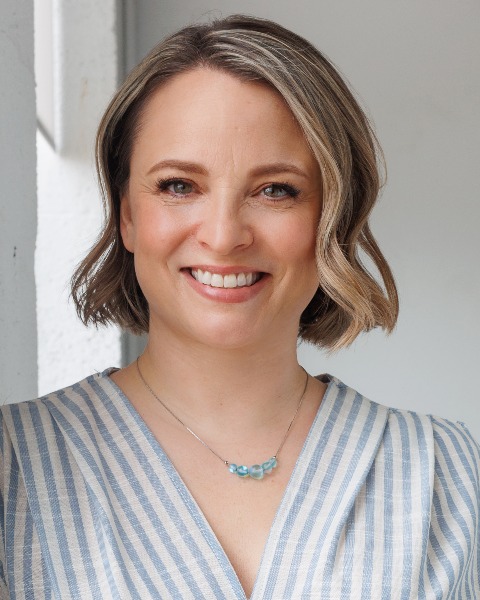Case Study/Case Series Report
A FUNCTIONAL GOAL-BASED PHYSICAL THERAPY TREATMENT LADDER FOR FUNCTIONAL NEUROLOGICAL DISORDER IN THREE ADOLESCENTS: A CASE SERIES
Friday, November 22, 2024
2:00 PM – 2:15 PM East Coast USA Time
Location: Meeting Room 557, 5th Floor, RI Convention Center

Jessica Gore, PT, DPT
Senior Physical Therapist
Hasbro Children's Hospital
Cranston, Rhode Island
Presenting Author(s)
Background & Purpose: Functional Neurological Disorder (FND) is a psychiatric and neurological condition that is encountered commonly in all areas of physical therapy (PT) practice. Due to the complex nature of FND, multidisciplinary and holistic treatment with consideration of biopsychosocial factors is required. Available literature reflects that PT is critical in multidisciplinary treatment (MDT) for these patients. Furthermore, psychologically informed PT (PIPT) treatment strategies have shown positive results in recent studies. This case series aims to explore an effective PIPT treatment tool, commonly called a "ladder", for adolescents with complex FND. The ladder utilizes task-specific functional mobility and/or recreational activities, identified by the patient as important to provide maximal focus away from their impairment. The ladder also utilizes incremental steps/goals to allow for consistent positive re-enforcement as well as an expectation of improvement, both previously found to be effective in the treatment of FND.
Case Description: Three patients (A-12-year-old female, B-16-year-old male, C-17-year-old female) who received FND treatment in a pediatric hospital system are presented in this case series. The biopsychosocial etiology of each case was complex. At presentation, the patients were all functionally impaired requiring physical assistance or devices for mobility. Each patient was unable to participate in school or recreation and was limited in social interaction due to their limitations. The outcome measure utilized was the Lower Extremity Functional Scale (LEFS), completed both before and after treatment episodes. All three patients received PIPT intervention utilizing the ladder tool for their individualized mobility and activity goals within a MDT program. Patient A received treatment for 13 weeks at 4x/week in the outpatient setting, Patient B for 17.5 weeks at 5x/week inpatient and outpatient, and Patient C for 7 weeks, initially at 5x/week as an inpatient, transitioning to 3x/week during the outpatient step-down.
Outcomes: All patients in the case series demonstrated a positive response to physical therapy intervention utilizing the ladder tool. Each patient was able to return fully to functional mobility independence without the use of an assistive device and returned to their recreational activities of preference. All patients dramatically improved their LEFS scores by 69 (86%), 70 (88%), and 74 points (92%) respectively, far beyond the 9 points required to indicate meaningful functional change with the LEFS.
Discussion: Based on these three cases, a functional goal-based treatment ladder approach is an effective PT treatment tool for pediatric patients with FND. Each patient in this case series regained their functional independence as well as their ability to participate in recreational activities of preference. The ladder is an important addition to the overall understanding of PIPT management of FND in the adolescent patient population, encompassing many evidence-based concepts and techniques to maximize treatment efficacy and improve quality of life.
Case Description: Three patients (A-12-year-old female, B-16-year-old male, C-17-year-old female) who received FND treatment in a pediatric hospital system are presented in this case series. The biopsychosocial etiology of each case was complex. At presentation, the patients were all functionally impaired requiring physical assistance or devices for mobility. Each patient was unable to participate in school or recreation and was limited in social interaction due to their limitations. The outcome measure utilized was the Lower Extremity Functional Scale (LEFS), completed both before and after treatment episodes. All three patients received PIPT intervention utilizing the ladder tool for their individualized mobility and activity goals within a MDT program. Patient A received treatment for 13 weeks at 4x/week in the outpatient setting, Patient B for 17.5 weeks at 5x/week inpatient and outpatient, and Patient C for 7 weeks, initially at 5x/week as an inpatient, transitioning to 3x/week during the outpatient step-down.
Outcomes: All patients in the case series demonstrated a positive response to physical therapy intervention utilizing the ladder tool. Each patient was able to return fully to functional mobility independence without the use of an assistive device and returned to their recreational activities of preference. All patients dramatically improved their LEFS scores by 69 (86%), 70 (88%), and 74 points (92%) respectively, far beyond the 9 points required to indicate meaningful functional change with the LEFS.
Discussion: Based on these three cases, a functional goal-based treatment ladder approach is an effective PT treatment tool for pediatric patients with FND. Each patient in this case series regained their functional independence as well as their ability to participate in recreational activities of preference. The ladder is an important addition to the overall understanding of PIPT management of FND in the adolescent patient population, encompassing many evidence-based concepts and techniques to maximize treatment efficacy and improve quality of life.

.png)
.png)
.png)
.png)
.png)
.png)
.png)
.png)